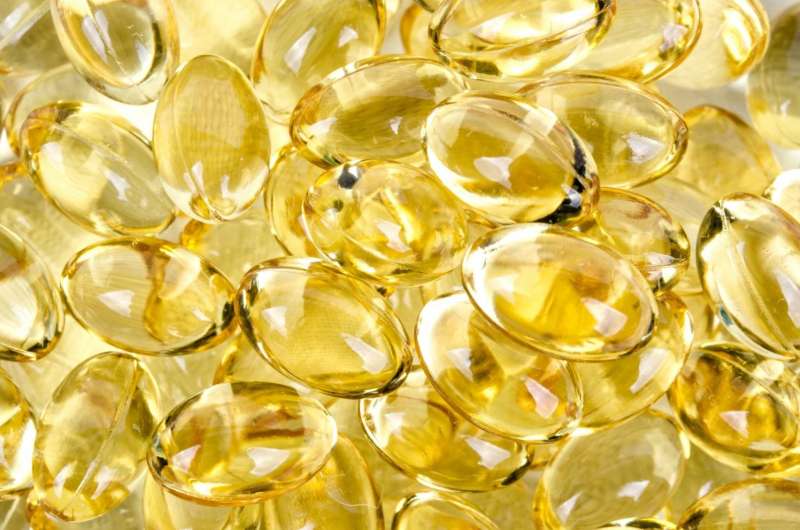Chemical exposure linked to lower vitamin D levels

Exposure to bisphenol A (BPA) and other endocrine-disrupting chemicals (EDCs) may reduce levels of vitamin D in the bloodstream, according to a new study published in the Endocrine Society's Journal of Clinical Endocrinology & Metabolism.
The study is the first to find an association between EDC exposure and vitamin D levels in a large group of U.S. adults.
EDCs are chemicals or mixtures of chemicals that can cause adverse health effects by interfering with hormones in the body. The Society's Scientific Statement on EDCs examined more than 1,300 studies that found links between chemical exposure and health problems, including infertility, obesity, diabetes, neurological problems and hormone-related cancers.
"Nearly every person on the planet is exposed to BPA and another class of endocrine-disrupting chemicals called phthalates, so the possibility that these chemicals may even slightly reduce vitamin D levels has widespread implications for public health," said the study's first author, Lauren Johns, MPH, a PhD candidate at the University of Michigan School of Public Health in Ann Arbor, MI. "Vitamin D plays a broad role in maintaining bone and muscle health. In addition, low vitamin D levels have been implicated in outcomes of numerous conditions such as cardiovascular disease, diabetes and cancer."
EDCs are found in everyday products and throughout the environment. There are more than 85,000 manufactured chemicals, of which thousands may be EDCs. BPA, a known EDC, is often found in plastics and other consumer products. Another group of chemicals linked to hormone disruption, phthalates, are found in personal care products such as cosmetics, children's products, food packaging and medical tubing.
The study examined data from 4,667 adults who participated in the National Health and Nutrition Examination Survey (NHANES) between 2005 and 2010. NHANES is a cross-sectional study designed to collect health and nutrition data from a sample of adults from across the United States. The participants provided blood samples so their vitamin D levels could be measured. To measure EDC exposure, the participants had their urine analyzed for substances left behind after the body metabolized phthalates and BPA.
The study found people who were exposed to larger amounts of phthalates were more likely to have low levels of vitamin D in the bloodstream than the participants who were exposed to smaller amounts of the EDCs. The link was strongest in women. There also was an association between exposure to higher levels of BPA and reduced vitamin D levels in women, although the relationship was not statistically significant in men.
"More research is needed into why an association exists, but it is possible that EDCs alter the active form of vitamin D in the body through some of the same mechanisms that they use to impact similar reproductive and thyroid hormones," said Professor John D. Meeker, MS, ScD, senior author of the study. "Confirmatory studies are needed to show whether this association exists in other populations."
The study, "Relationships between Phthalate and Bisphenol A Concentrations and Vitamin D Levels in U.S. Adults," will be published online ahead of print.
More information: Lauren E. Johns et al. Relationships Between Urinary Phthalate Metabolite and Bisphenol A Concentrations and Vitamin D Levels in U.S. Adults: National Health and Nutrition Examination Survey (NHANES), 2005–2010, The Journal of Clinical Endocrinology & Metabolism (2016). DOI: 10.1210/jc.2016-2134














